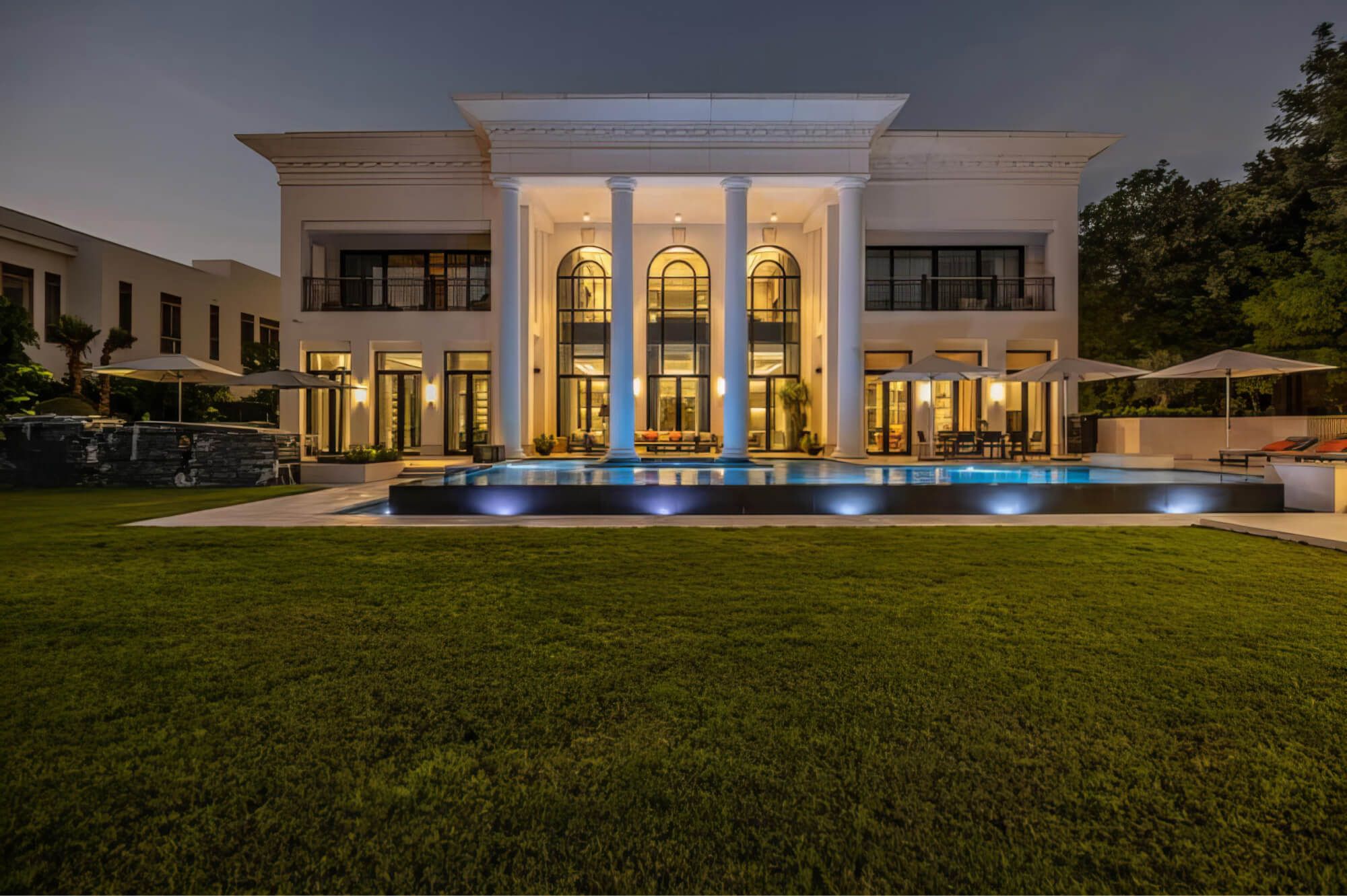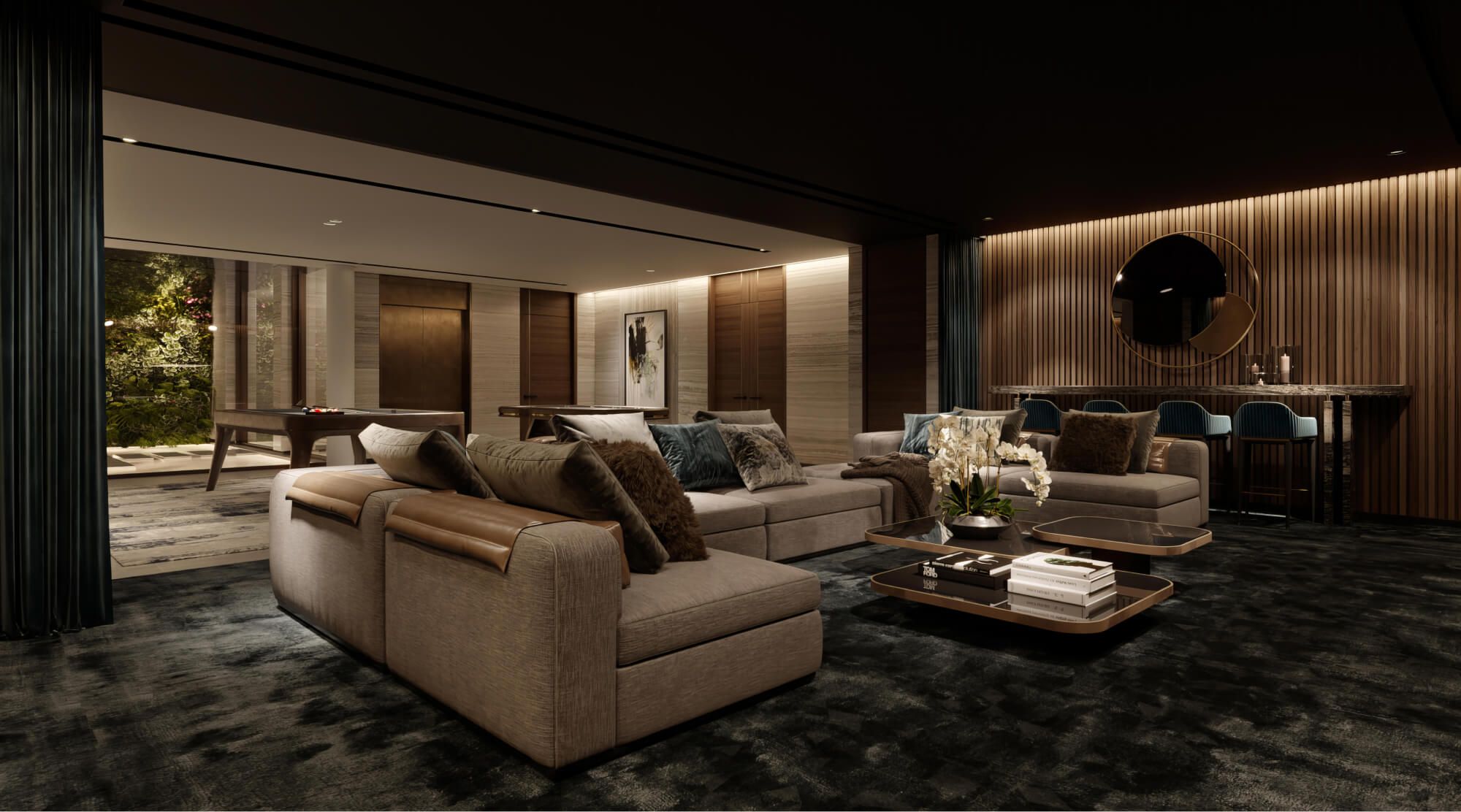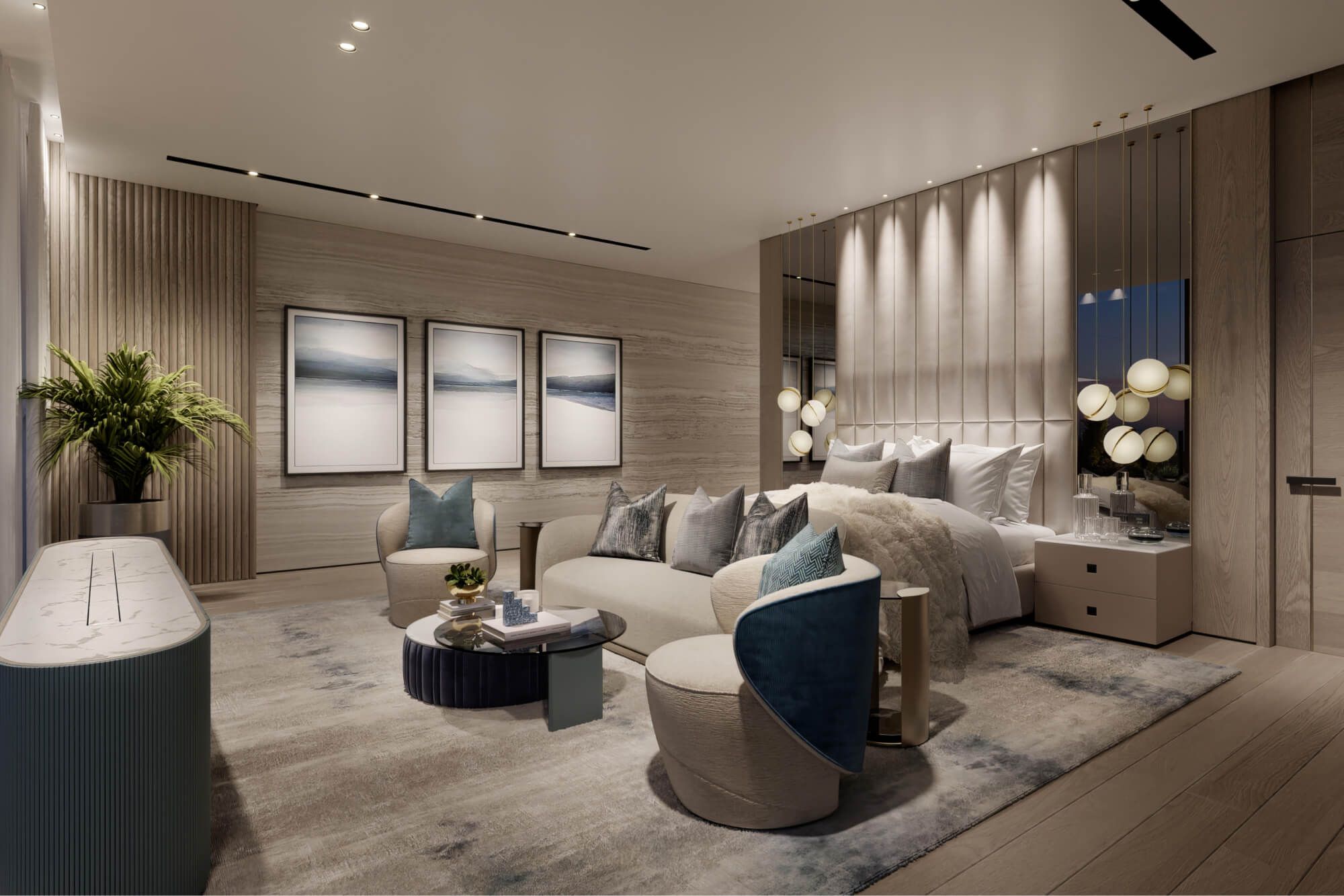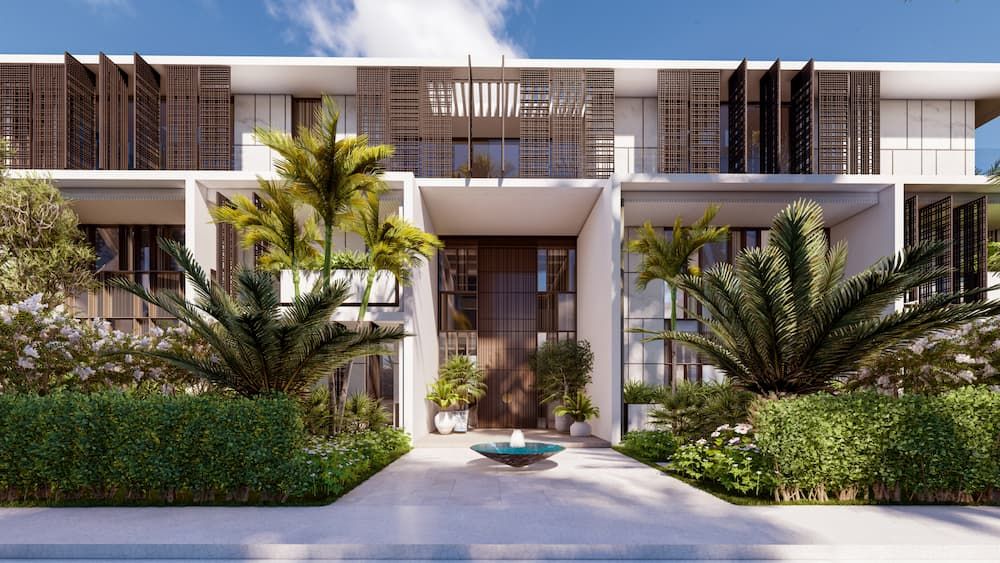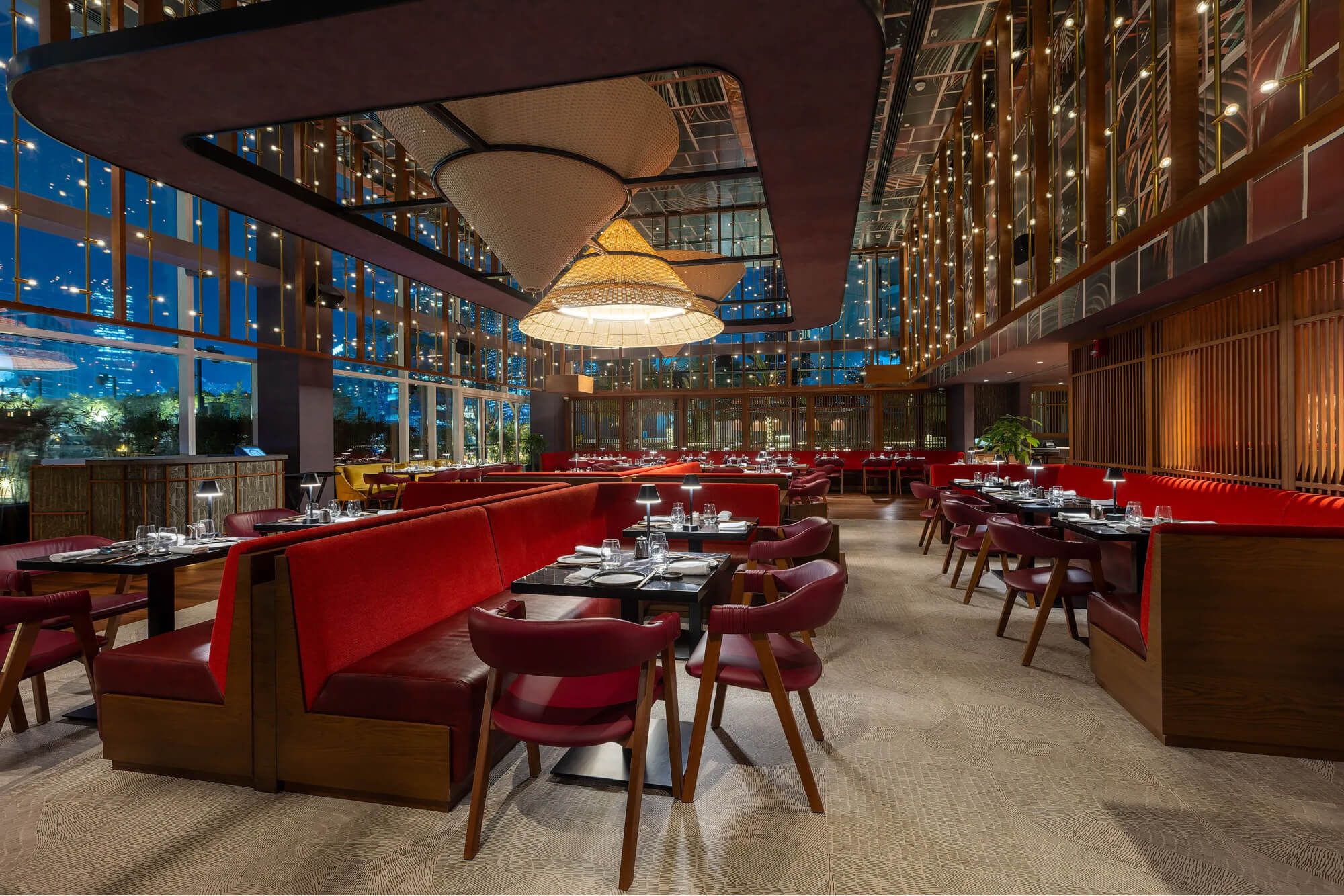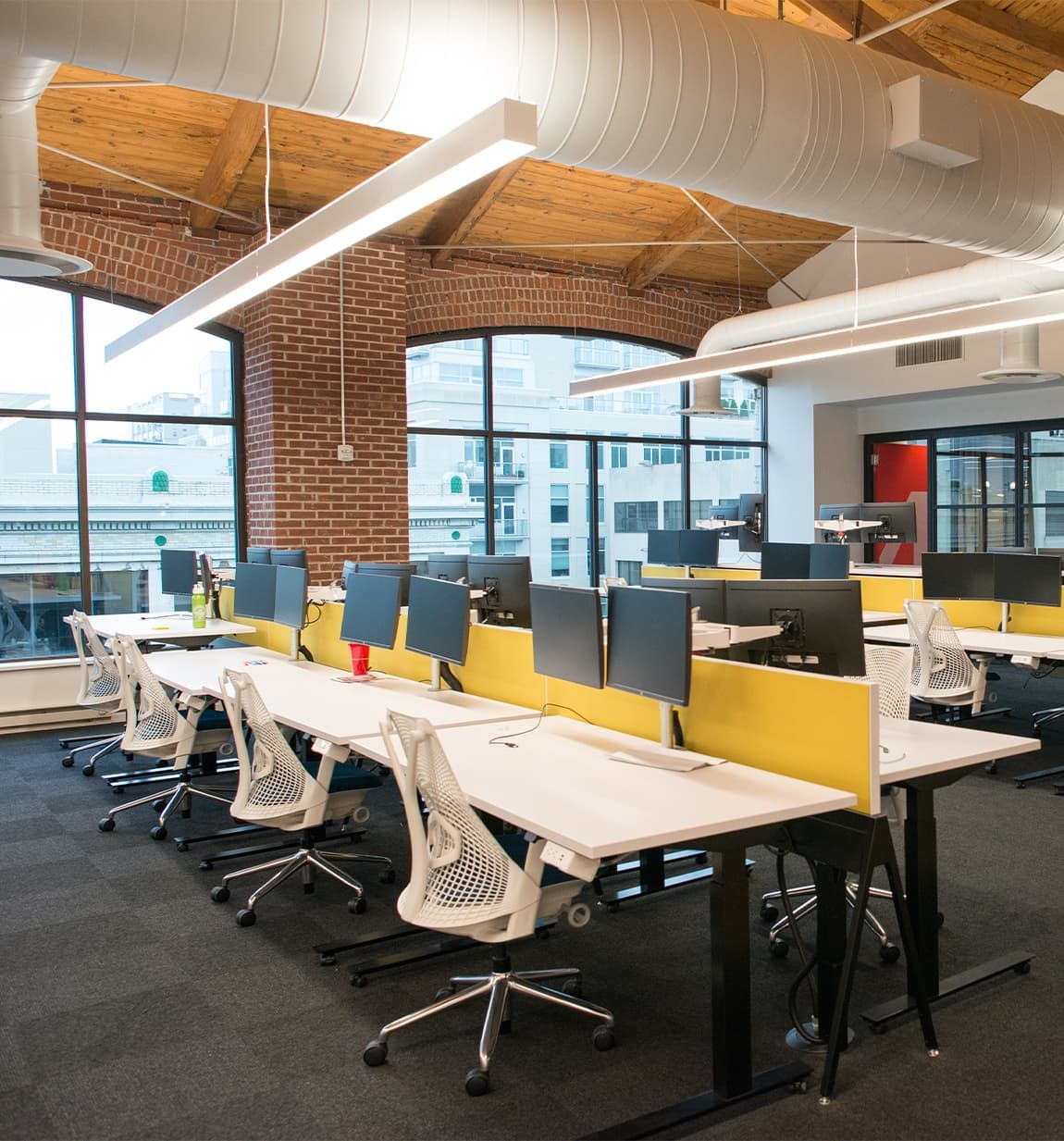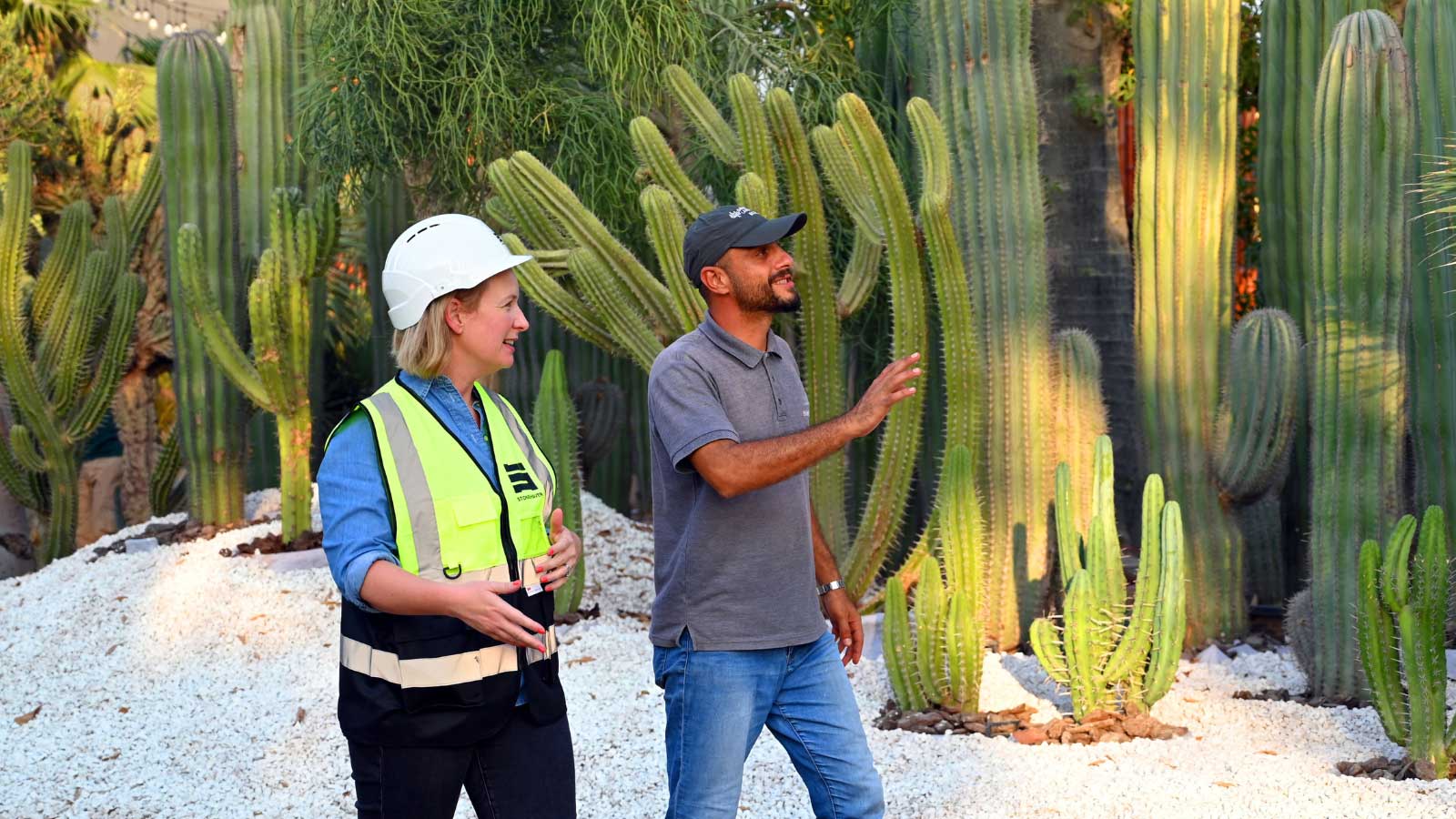The Middle East is grappling with the pressing effects of climate change. With temperatures rising, water becoming scarcer, and rapid urbanisation, the region faces severe environmental challenges. However, landscape architecture and landscape design support are proving to be powerful solutions for these issues. By transforming how cities approach outdoor spaces, we can create urban environments that not only enhance aesthetics but also promote sustainability and resilience against climate change.
Through innovative planning and the thoughtful integration of natural elements, landscape architecture and design support can reduce carbon footprints, conserve water, promote biodiversity, and make urban areas more climate resilient. Let’s explore how these practices are transforming cities across the Middle East.
Understanding Landscape Design: More Than Just Aesthetic Appeal
According to experts in the field, landscape design is about much more than making outdoor spaces visually appealing. Landscape architecture is a systematic approach to designing outdoor environments, while incorporating factors like functionality, environmental sustainability, and long-term climate resilience. These considerations are critical for addressing the unique environmental challenges faced by cities in the Middle East.
When planning urban green spaces, landscape architects and design consultants must carefully evaluate how natural elements, such as vegetation and water systems, can be harmoniously integrated with the built environment. In the context of the Middle East, this means choosing resilient plant species, developing efficient water management systems, and using innovative materials to ensure that landscapes can withstand harsh conditions.
What are the Benefits of Landscape Design in the Middle East?
In the Middle East, where environmental challenges such as extreme heat, water scarcity, and urban sprawl are prevalent, the benefits of landscape design are particularly impactful. The region's unique climate demands thoughtful, sustainable design that balances aesthetic appeal with environmental resilience.
The cost of landscape projects in the GCC can vary widely. High-end projects, especially those that focus on sustainable materials and innovative designs, are seeing increased budgets. The landscape architecture market in the region is projected to grow at a CAGR of 4.6% between 2023 and 2027, fuelled by both public and private sector investments in urban planning, green spaces, and climate-resilient infrastructure.
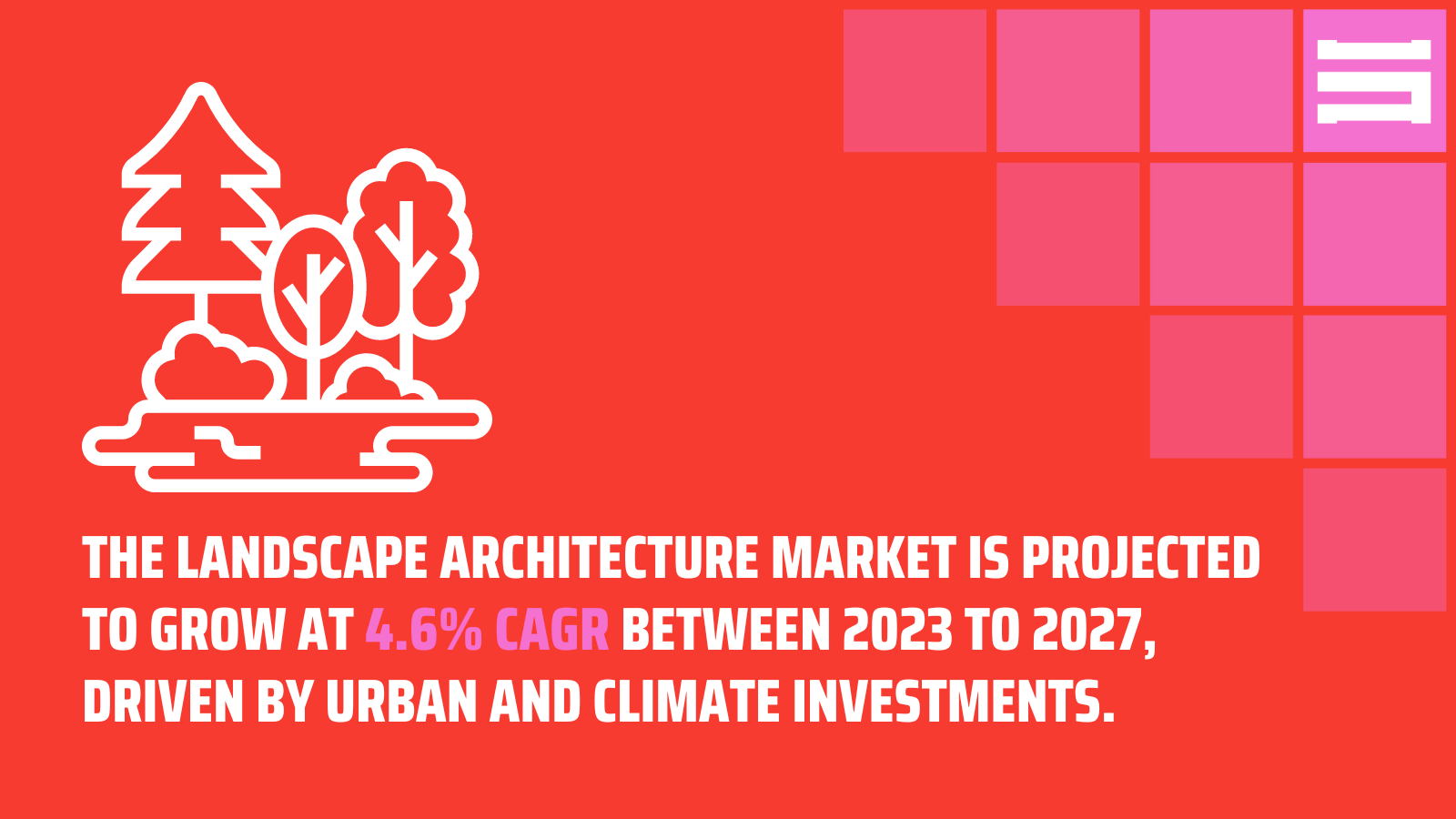
Here are some key benefits of landscape design in the Middle East:
- Environmental Sustainability: With arid climates and limited water resources, sustainable landscape design is essential. Incorporating native plants and drought-tolerant species into landscapes significantly reduces water consumption. Efficient smart irrigation systems further ensure that green spaces are maintained with minimal waste, a crucial aspect in water-scarce areas like the UAE and Saudi Arabia.
- Climate Resilience: Landscape design plays a vital role in mitigating the urban heat island effect, common in cities such as Dubai and Riyadh. By integrating trees, green roofs, and shaded areas, landscape design naturally cools urban environments, reducing the need for energy-intensive air conditioning systems. These solutions help cities adapt to the challenges posed by rising temperatures, contributing to overall climate resilience.
- Enhancing Well-being: In the densely populated and fast-paced urban environments of the Middle East, well-designed green spaces provide much-needed areas for relaxation and recreation. Parks, shaded walkways, and urban plazas create social interaction, encourage physical activity, and promote mental well-being. These spaces are essential for improving the quality of life in growing cities like Abu Dhabi and Jeddah.
- Economic Impact: Thoughtfully designed landscapes increase property values and attract tourists and investors. For instance, high-end developments in Dubai and Qatar have benefitted from the integration of beautifully landscaped areas, which enhance the overall appeal and functionality of the property. Well-maintained green spaces also encourage tourism, contributing to economic growth across the region.
Landscape Design Ideas for the Middle East
Designing landscapes in the Middle East requires a tailored approach to handle the region's unique environmental conditions, including high temperatures, scarce rainfall, and the need for energy efficiency. Below are some practical and innovative landscape design ideas that are well-suited for the Middle East:
- Xeriscaping for Water Efficiency: In a region where water scarcity is a critical concern, xeriscaping is an ideal solution. This method focuses on using drought-resistant plants that require minimal irrigation, such as desert shrubs, succulents, and palms. Xeriscaping not only conserves water but also ensures that landscapes remain vibrant and green in arid conditions, making it perfect for cities like Riyadh and Muscat.
- Shaded Courtyards and Walkways: Given the harsh sun and high temperatures, creating shaded outdoor spaces is essential. Landscape architects and design consultants can integrate shaded courtyards, walkways, and seating areas using pergolas, canopies, and trees. These areas provide comfortable outdoor environments for residents and visitors in cities like Dubai and Doha, encouraging more outdoor activities even in the hotter months.
- Water Features with Sustainability in Mind: While water is a precious resource in the Middle East, incorporating water features such as reflective pools, fountains, and water walls can still be sustainable. By using recycled water and closed-loop systems, these features can cool down surrounding areas and enhance the visual appeal of public spaces without wasting water. Cities like Abu Dhabi and Manama are increasingly using these systems in public parks and commercial developments.
- Vertical Gardens and Green Roofs: Vertical gardens and green roofs are ideal for urban environments where space is limited. These features reduce the urban heat island effect, enhance air quality, and provide green spaces in densely built-up areas. In cities like Kuwait City, integrating these elements into skyscrapers and residential buildings can transform the skyline into a more eco-friendly and aesthetically pleasing environment.
- Solar-Powered Outdoor Lighting: With abundant sunlight year-round, the Middle East is well-suited for solar-powered outdoor lighting. Incorporating solar panels into lighting systems for parks, streets, and pathways ensures that outdoor spaces remain well-lit without increasing energy consumption. This also supports the region’s wider push towards sustainable energy solutions, particularly in countries like Saudi Arabia and the UAE.
The Role of Landscape Architecture and Design Support in Climate Resilience
The importance of landscape architecture and landscape design support in the fight against climate change has grown dramatically, particularly in regions like the Middle East. As urban areas expand, there’s an increasing demand for outdoor spaces that are not only visually appealing but also functional, sustainable, and resilient. These disciplines provide the expertise required to design environments that balance human needs with environmental stewardship.
In the Middle East, where environmental pressures such as extreme heat and water scarcity are significant, both landscape architects and landscape design consultants work together to create sustainable, resilient landscapes. These spaces, in turn, reduce energy consumption, conserve water, and provide vital green areas in densely populated urban environments.
1. Reducing the Urban Heat Island Effect
One of the most pressing environmental challenges in the Middle East is the urban heat island effect. Urban areas, characterised by vast expanses of heat-absorbing concrete, steel, and asphalt, experience higher temperatures than rural surroundings. This not only exacerbates the already extreme heat in cities like Dubai and Riyadh but also leads to increased energy consumption as air conditioning usage spikes.
Landscape architecture and landscape design support offer effective solutions by incorporating green spaces that help cool urban environments naturally. By planting trees, shrubs, and incorporating green roofs, urban areas can reduce surface temperatures and provide shade, decreasing the need for energy-intensive cooling systems.
For instance, green roofs and tree-lined streets not only provide shade but also act as natural air purifiers, improving overall air quality. These solutions are increasingly being integrated into large-scale urban projects in the Middle East, transforming how cities adapt to rising temperatures.
2. Water Conservation in Landscape Design Support
Water scarcity is another major environmental challenge facing the Middle East. Given the arid conditions, creating and maintaining green spaces while conserving water is critical. Landscape design support plays a vital role in addressing this issue by developing water-efficient landscapes.
Innovative water conservation strategies, such as xeriscaping (landscaping that reduces or eliminates the need for irrigation), are increasingly being adopted in the Middle East. Incorporating drought-tolerant plants and native species that are naturally suited to the region’s climate can significantly reduce water usage. These plants require less irrigation, which in turn conserves water while still providing lush, green landscapes. The Middle East is grappling with water scarcity and rising temperatures. For example, the Arabian Peninsula is projected to see a decrease in precipitation by approximately 8.3% per decade, exacerbating challenges in maintaining green urban spaces.
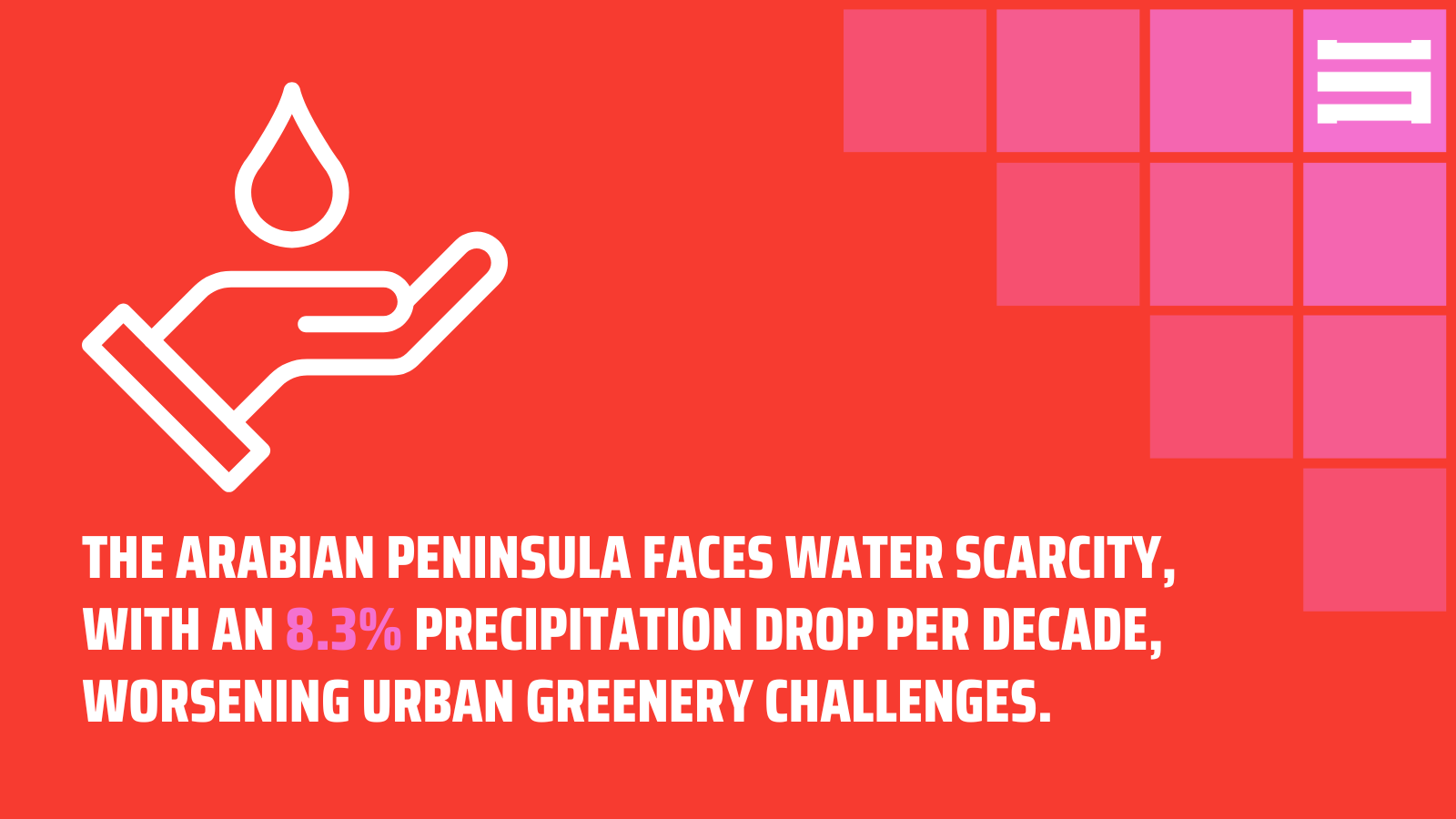
In addition to selecting appropriate plant species, smart irrigation systems, which adjust watering schedules based on weather conditions and soil moisture levels, further reduce water wastage. Rainwater harvesting and permeable pavements that allow water to seep back into the ground are additional solutions being implemented by landscape design consultants to reduce water runoff and wastage.
Through these approaches, landscape design support ensures that green spaces in the Middle East are both beautiful and sustainable, even in the face of severe water scarcity.
3. Promoting Biodiversity and Ecological Balance
Urban development has often come at the cost of biodiversity, with natural habitats being replaced by buildings and infrastructure. However, landscape architecture and landscape design support can reverse this trend by incorporating biodiversity into urban planning. This is especially critical in the Middle East, where desert ecosystems are fragile, and biodiversity is at risk.
Creating urban green spaces that mimic natural ecosystems is a growing trend in the field. Landscape architects and design consultants can create green spaces that support local ecosystems by using native plants and creating habitats for wildlife. These areas act as green corridors that allow animals and insects to thrive in otherwise built-up environments.
In the Middle East, where rapid urbanisation threatens natural habitats, landscape design can restore ecological balance by reintroducing native plant species and creating green spaces that are home to a diverse range of species. This not only promotes biodiversity but also helps the ecosystem become more resilient to climate change.
4. Carbon Sequestration and Improving Air Quality
Landscape architecture and landscape design support also make a significant contribution to combating climate change through carbon sequestration. Trees and other vegetation naturally absorb carbon dioxide from the atmosphere, helping to offset emissions from urban areas. In a region where industrial activities and energy consumption are high, increasing green spaces through landscape design is crucial.
Incorporating more greenery into urban landscapes helps improve air quality by filtering pollutants and absorbing carbon dioxide. Cities with more parks, tree-lined streets, and green roofs can significantly reduce their overall carbon footprint. The introduction of vegetation into urban design not only lowers emissions but also creates healthier living environments for residents.
By embracing landscape architecture that focuses on carbon sequestration and air purification, Middle Eastern cities can lead the charge in creating urban spaces that fight climate change while improving quality of life.
5. Enhancing Climate-Resilient Urban Spaces
With climate change comes the increasing need for cities to become more adaptable to extreme weather events. Landscape architecture and design support play a crucial role in making cities more resilient to these changes by designing spaces that can cope with climate extremes, such as rising temperatures, floods, and storms.
For example, green infrastructure is becoming a key element in urban planning. Features such as rain gardens, permeable pavements, and bioswales help manage stormwater, reduce flooding, and prevent water pollution. Landscape design consultants work to ensure that these features are integrated into urban spaces in ways that not only enhance functionality but also promote sustainability.
In a region prone to flash floods and extreme heat, designing urban landscapes that can absorb stormwater and reduce flood risks is essential. These design strategies also help cities recover faster from extreme weather, making them more climate-resilient in the long term. In Qatar, innovative irrigation techniques are being implemented to significantly reduce water usage in public green spaces. The Ministry of Municipality and Environment (MME) has adopted advanced irrigation systems, which have led to water savings of up to 25% in some areas.
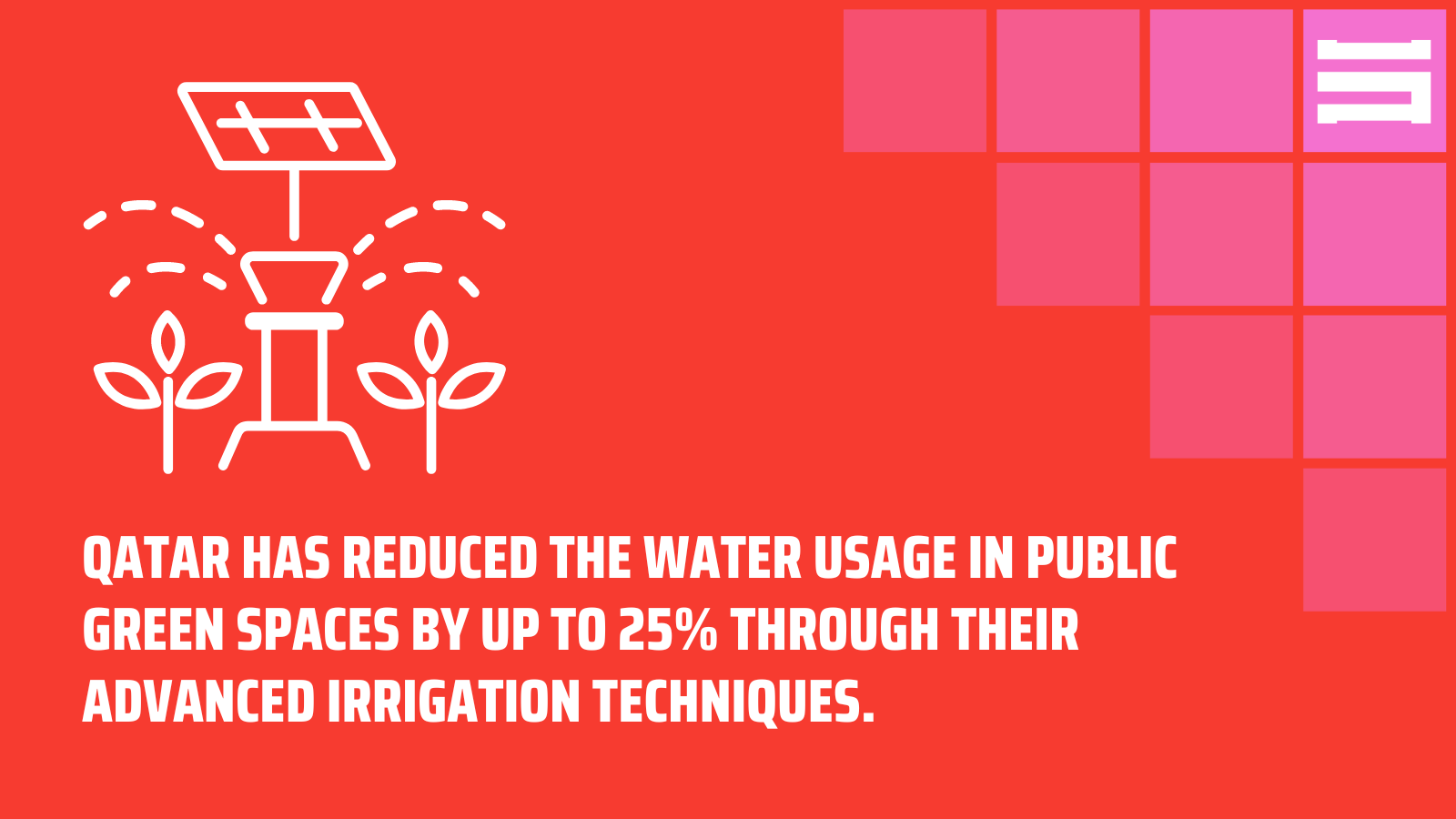
These measures align with Qatar's sustainability goals, particularly as part of the National Vision 2030, which focuses on improving environmental resilience and addressing water scarcity challenges in the arid climate of the region.
6. Landscape Architecture and Design Support for Sustainable Communities
Beyond the environmental benefits, landscape architecture and landscape design support contribute to creating sustainable communities. Well-designed outdoor spaces enhance social interaction, encourage physical activity, and promote mental well-being. In the fast-paced urban environments of the Middle East, where population density is rising, these spaces provide residents with much-needed areas for relaxation and recreation.
Green spaces such as parks, plazas, and communal gardens enhance the quality of life by providing cleaner air, cooler environments, and aesthetically pleasing surroundings. These spaces also bring communities together, for a sense of belonging and connection. The integration of sustainable design principles ensures that these outdoor environments are not only beneficial to people but also environmentally friendly.
Conclusion
As the Middle East continues to develop, the role of landscape design support in shaping sustainable cities will only become more important. The region's rapid urbanisation and environmental challenges demand thoughtful, well-planned landscapes that contribute to climate resilience.
By combining the expertise of landscape architects and landscape design consultants, cities across the Middle East can embrace innovative solutions that address environmental concerns, promote sustainability, and improve the overall quality of life for residents. From reducing water usage to creating green spaces that sequester carbon, landscape design support is helping cities adapt to the realities of climate change while creating vibrant, liveable environments.
As cities in the Middle East continue to grow, integrating landscape design support into urban planning will be essential for reducing the environmental impact of urbanisation. Through innovative, sustainable designs, we can create cities that not only thrive in the face of climate change but also offer healthier, more liveable spaces for their residents.
About us
Stonehaven is a trusted project management company and construction consultant based in Dubai, offering comprehensive construction management services across the UAE with offices located in Dubai, UK and Sri Lanka. As one of the leading project management companies in Dubai, we manage projects from inception to completion, ensuring quality, efficiency, and cost-effectiveness at every stage.
We deliver value through expert project management consultancy services, tailored to meet the unique needs of each client. Our core services include Cost Management, Project Management, Construction Supervision, Engineering Support, Design Support, and Marketing & Communications. Whether you’re looking for construction consultants or project managers in the UAE and wider GCC region, Stonehaven is your trusted partner for achieving excellence in your next project.
At Stonehaven, we are committed to using landscape architecture and landscape design support to create sustainable, climate-resilient environments. Our team of experienced landscape design consultants collaborates closely with developers and urban planners to design outdoor spaces that not only enhance aesthetics but also help fight climate change.
Ready to transform your outdoor environment? Discover how our landscape architecture and design support services can help your project contribute to a greener, more sustainable future.

